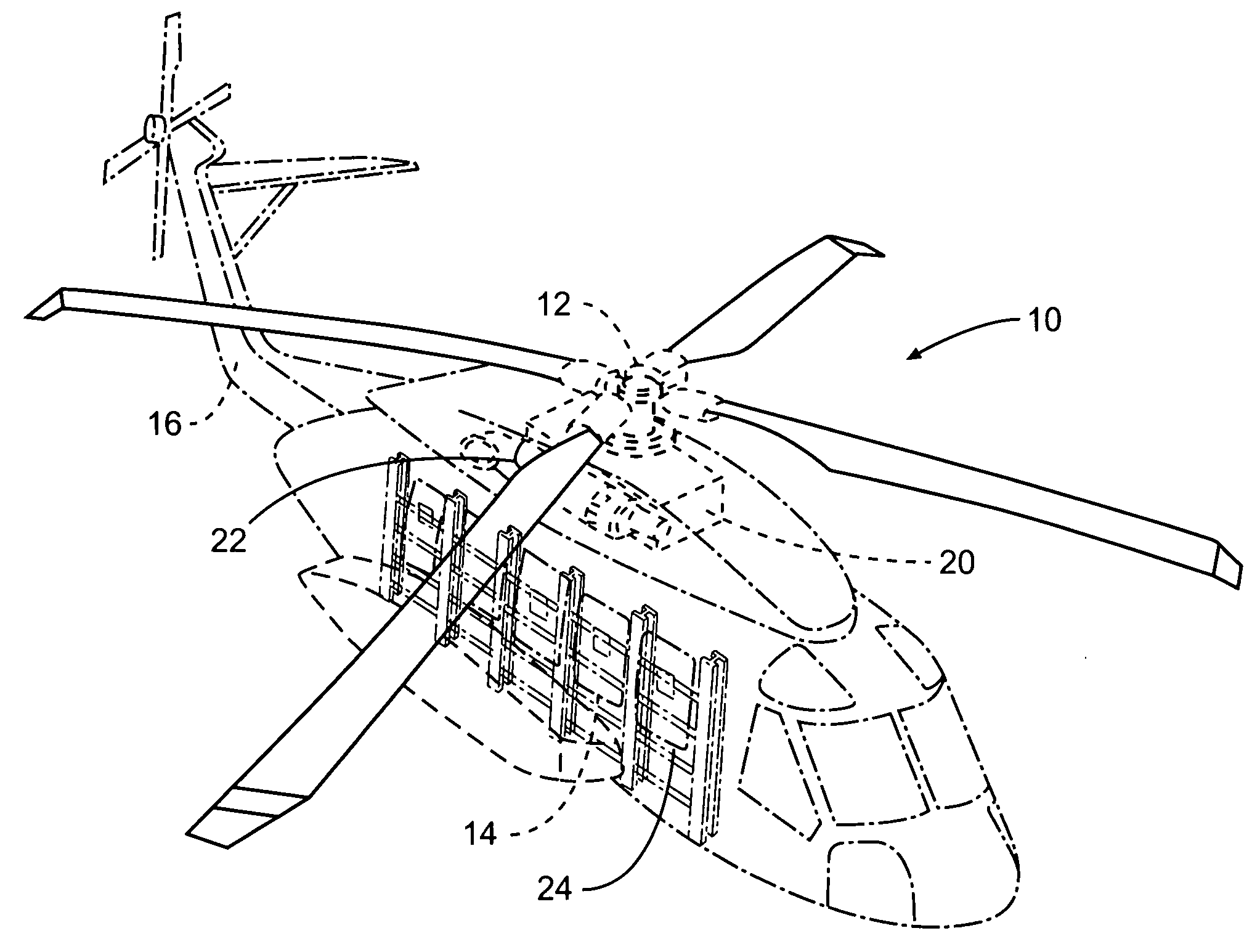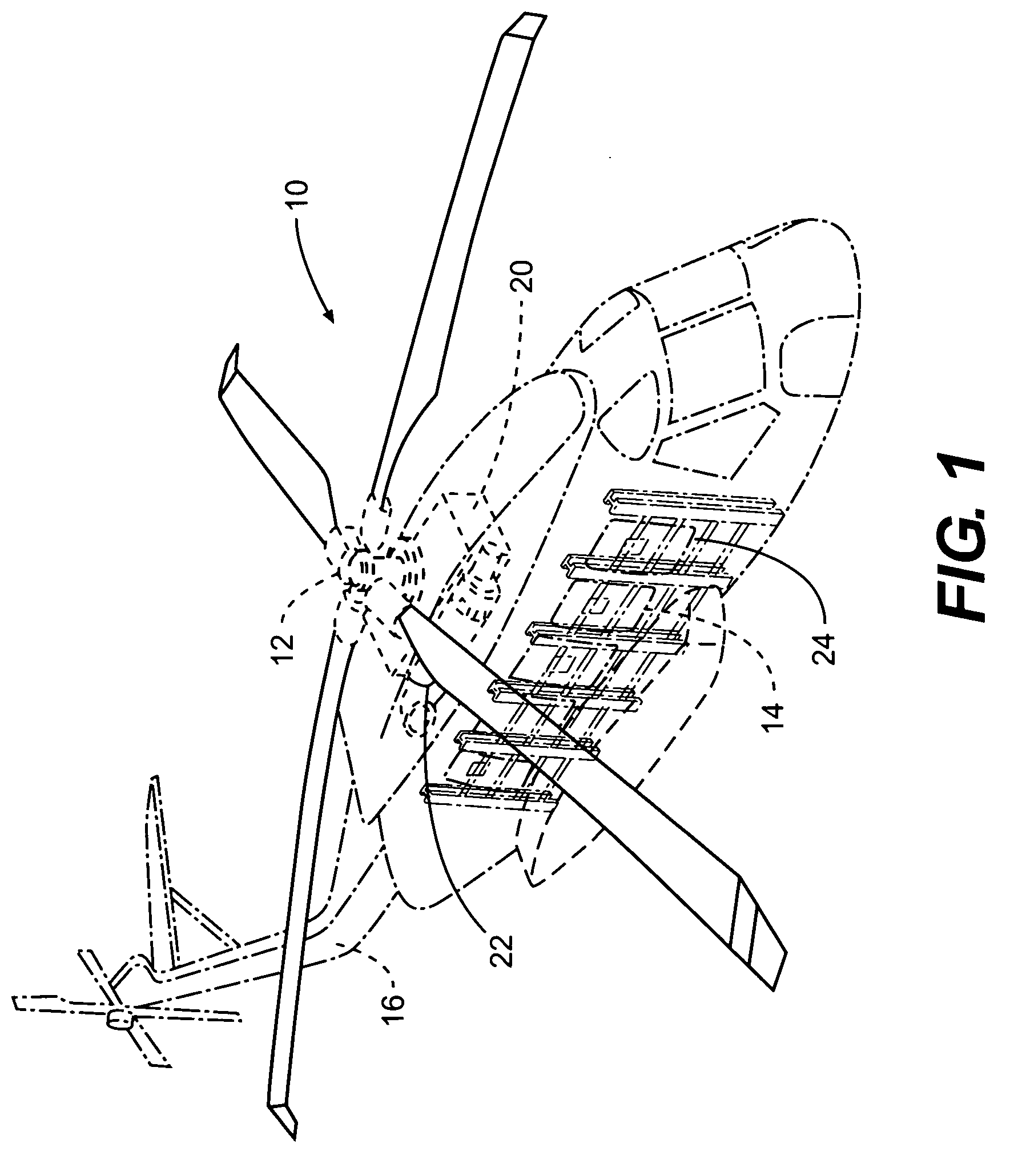Tunable acoustic absorption system for an aircraft cabin
a technology of acoustic absorption and acoustic treatment, which is applied in the direction of aircraft accessories, fuselages, transportation and packaging, etc., can solve the problems of aircraft cabin noise, components that generate vibration in the aircraft, and noise may be a particular problem, and achieve the effect of increasing acoustic absorption
- Summary
- Abstract
- Description
- Claims
- Application Information
AI Technical Summary
Benefits of technology
Problems solved by technology
Method used
Image
Examples
Embodiment Construction
[0016]FIG. 1 schematically illustrates a rotary-wing aircraft 10 having a main rotor assembly 12. The aircraft 10 includes an airframe 14 having an extending tail 16 which mounts an anti-torque rotor 18. The main rotor assembly 12 is driven through a transmission (illustrated schematically at 20) by one or more engines 22. Although a particular helicopter configuration is illustrated in the disclosed embodiment, other rotary-wing machines such as turbo-props, tilt-rotor and tilt-wing aircraft will also benefit from the present invention.
[0017]Referring to FIG. 2A, an airframe section 24 includes a multitude of frame members 26 which support an outer skin 28 and a tunable acoustic absorption system 25 opposite the outer skin 28.
[0018]The airframe section 24 is the outer structure of the aircraft 10 and may include one or more window areas 30. The window areas 30 are typically located through the outer skin 28 between the multitude of frame members 26. The multitude of frame members 2...
PUM
 Login to View More
Login to View More Abstract
Description
Claims
Application Information
 Login to View More
Login to View More - R&D
- Intellectual Property
- Life Sciences
- Materials
- Tech Scout
- Unparalleled Data Quality
- Higher Quality Content
- 60% Fewer Hallucinations
Browse by: Latest US Patents, China's latest patents, Technical Efficacy Thesaurus, Application Domain, Technology Topic, Popular Technical Reports.
© 2025 PatSnap. All rights reserved.Legal|Privacy policy|Modern Slavery Act Transparency Statement|Sitemap|About US| Contact US: help@patsnap.com



